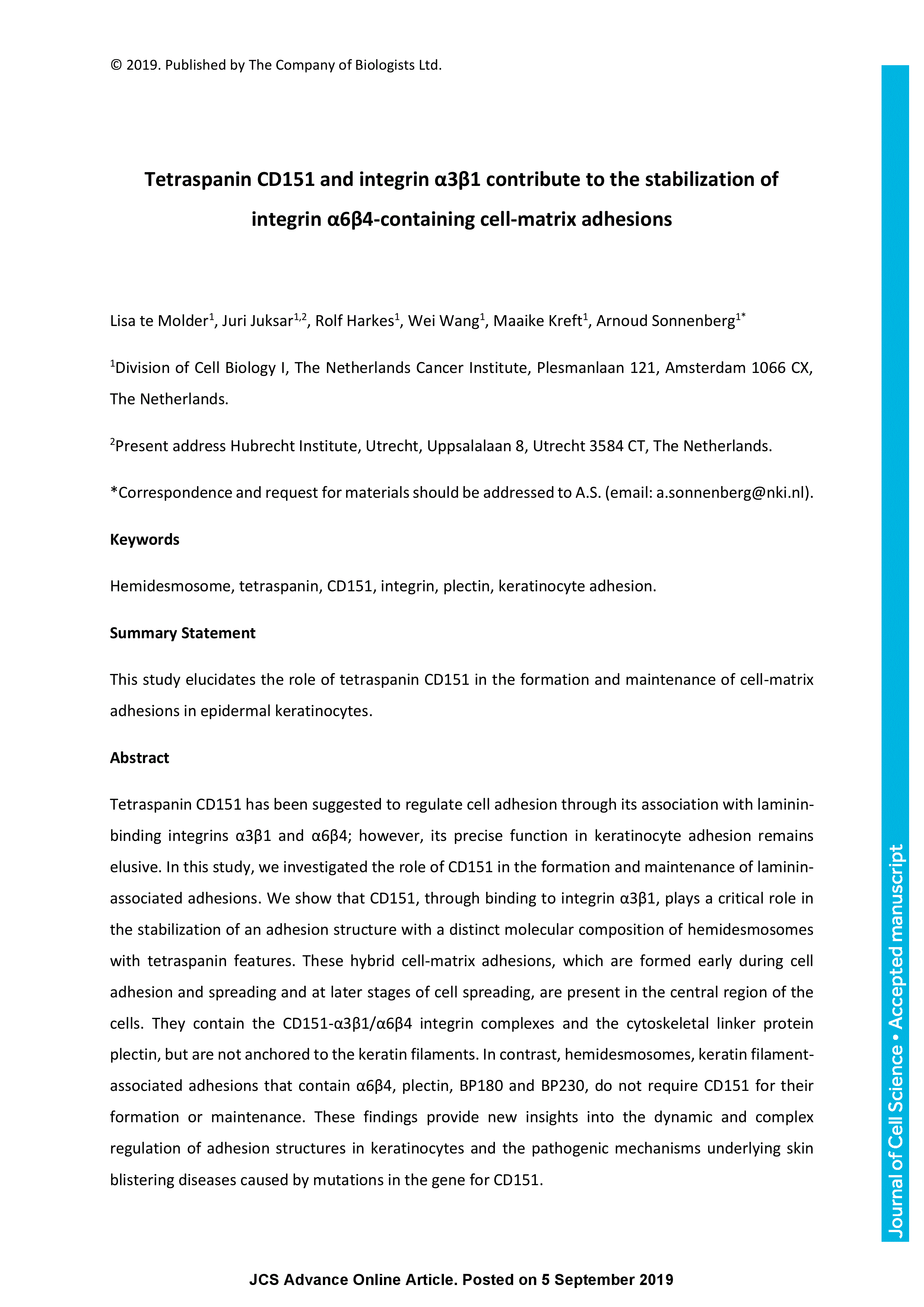Tetraspanin CD151 has been suggested to regulate cell adhesion through its association with laminin-binding integrins α3β1 and α6β4; however, its precise function in keratinocyte adhesion remains elusive. In this study, we investigated the role of CD151 in the formation and maintenance of laminin-associated adhesions. We show that CD151, through binding to integrin α3β1, plays a critical role in the stabilization of an adhesion structure with a distinct molecular composition of hemidesmosomes with tetraspanin features. These hybrid cell-matrix adhesions, which are formed early during cell adhesion and spreading and at later stages of cell spreading, are present in the central region of the cells. They contain the CD151-α3β1/α6β4 integrin complexes and the cytoskeletal linker protein plectin, but are not anchored to the keratin filaments. In contrast, hemidesmosomes, keratin filament-associated adhesions that contain α6β4, plectin, BP180 and BP230, do not require CD151 for their formation or maintenance. These findings provide new insights into the dynamic and complex regulation of adhesion structures in keratinocytes and the pathogenic mechanisms underlying skin blistering diseases caused by mutations in the gene for CD151.
Tetraspanin CD151 and integrin α3β1 contribute to the stabilization of integrin α6β4-containing cell-matrix adhesions
Present address Hubrecht Institute, Utrecht, Uppsalalaan 8, Utrecht 3584 CT, The Netherlands.
Currently Viewing Accepted Manuscript - Newer Version Available
Lisa te Molder, Juri Juksar, Rolf Harkes, Wei Wang, Maaike Kreft, Arnoud Sonnenberg; Tetraspanin CD151 and integrin α3β1 contribute to the stabilization of integrin α6β4-containing cell-matrix adhesions. J Cell Sci 2019; jcs.235366. doi: https://doi.org/10.1242/jcs.235366
Download citation file:
Advertisement
Introducing our new Editors

We welcome three new Editors to Journal of Cell Science - Robert Parton, Richa Rikhy and Simon Cook. You can read more about them in the Editorial from our Editor-in-Chief Michael Way.
2024 Journal Meeting 'Diversity and Evolution in Cell Biology'

Registration is open for our 2024 Journal Meeting Diversity and Evolution in Cell Biology, which aims to bring together evolutionary biologists and cell biologists investigating diverse aspects of cellular physiology. Final registration deadline: 3 May 2024.
Workshop: Physics of the Early Embryonic Cell Divisions

Early-career researchers interested in the roles of nuclear lipids, apply now for one of the ten funded places at this Workshop, which will take place 11-14 November 2024. Application deadline: 17 May.
Reasons to submit to Journal of Cell Science

There are many benefits to publishing in Journal of Cell Science - read more about why you should choose JCS or visit our submission page now.
Propose a new Workshop for 2026

We are now accepting proposals for our 2026 Workshops programme. We aim to be responsive to the community and open to novel initiatives, so if you have a new idea for a biological workshop that you feel would work well, please apply. Applications deadline: 19 July 2024.



